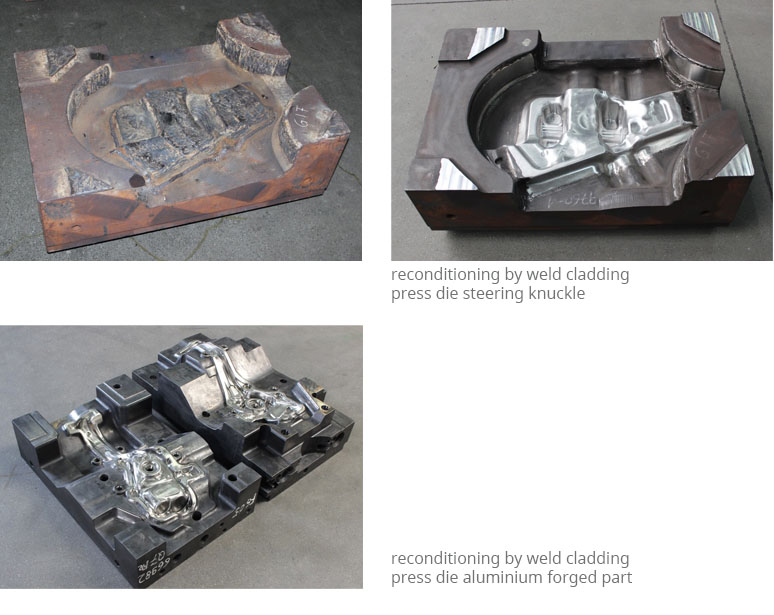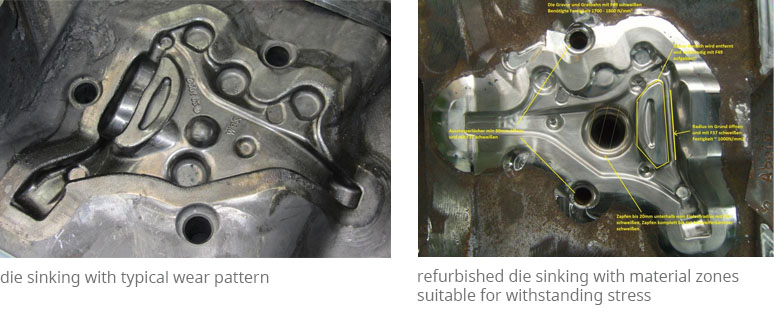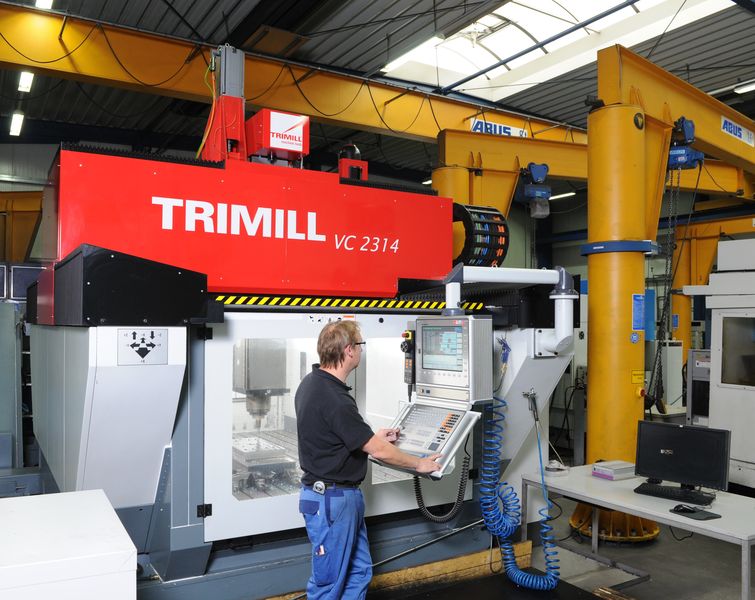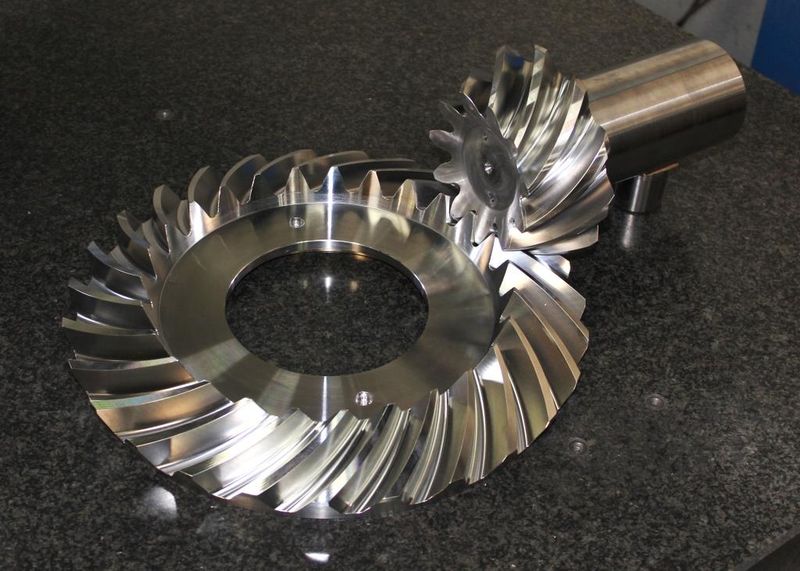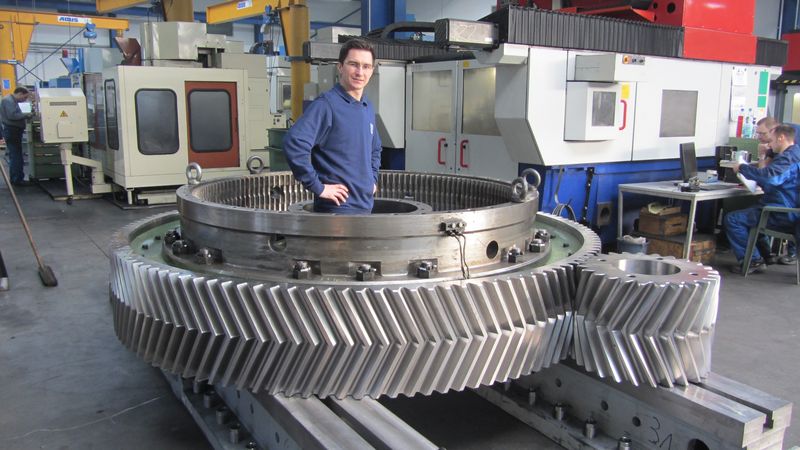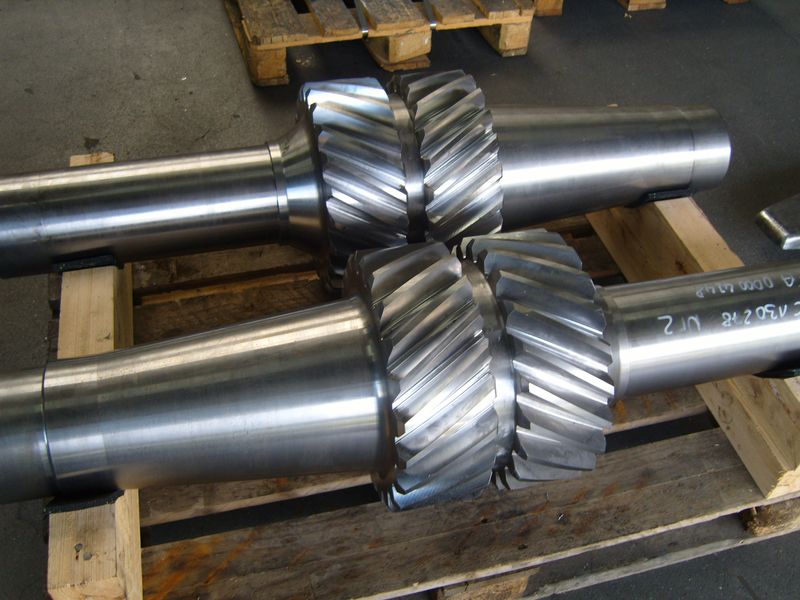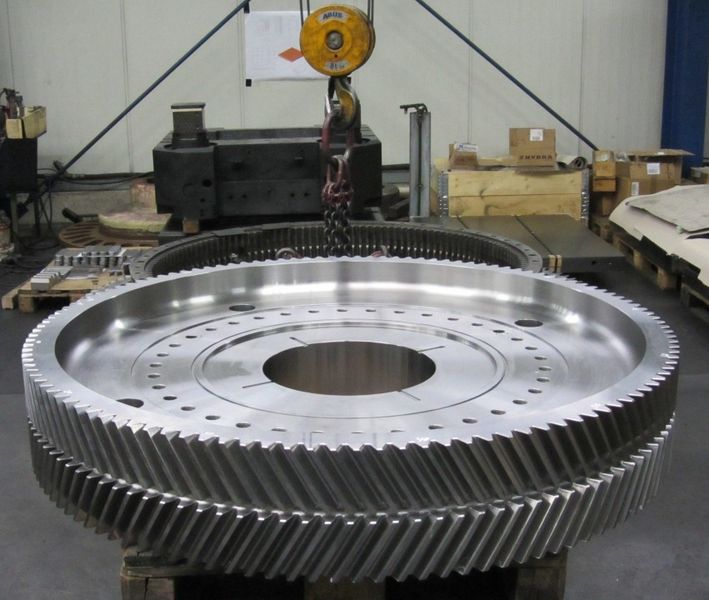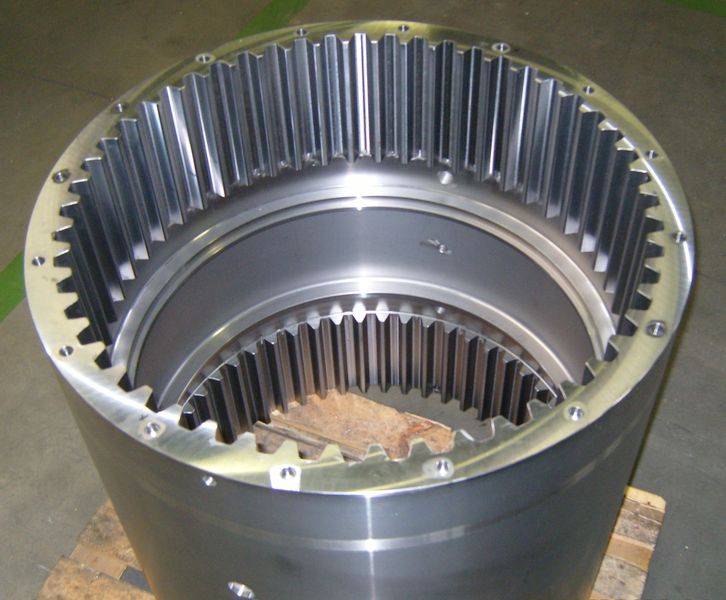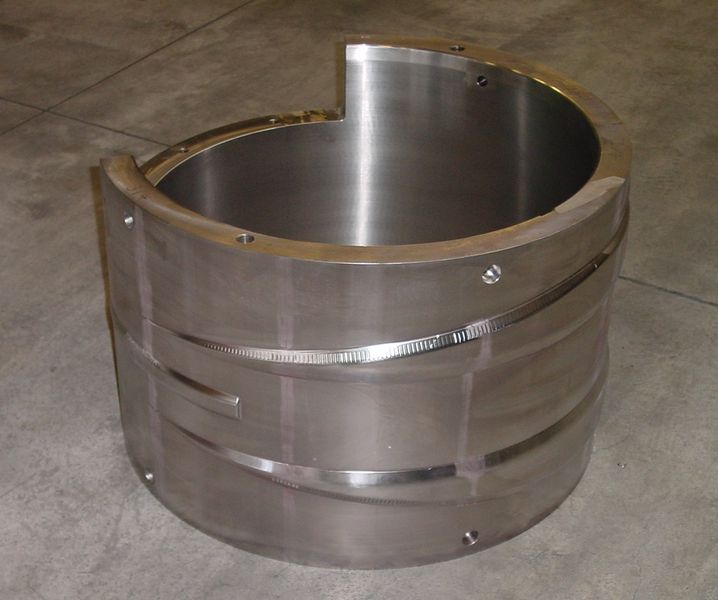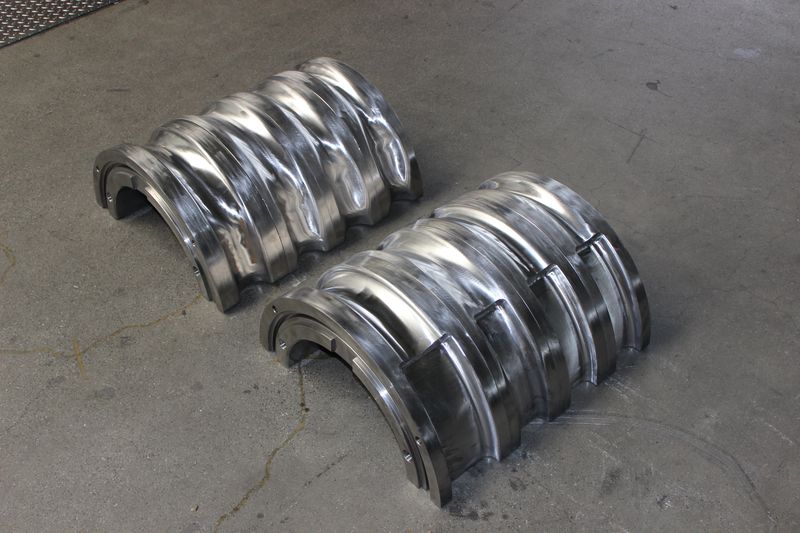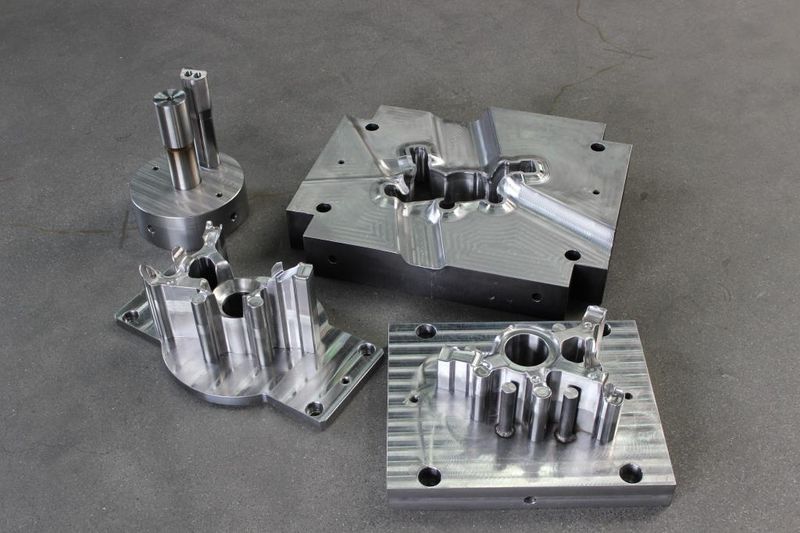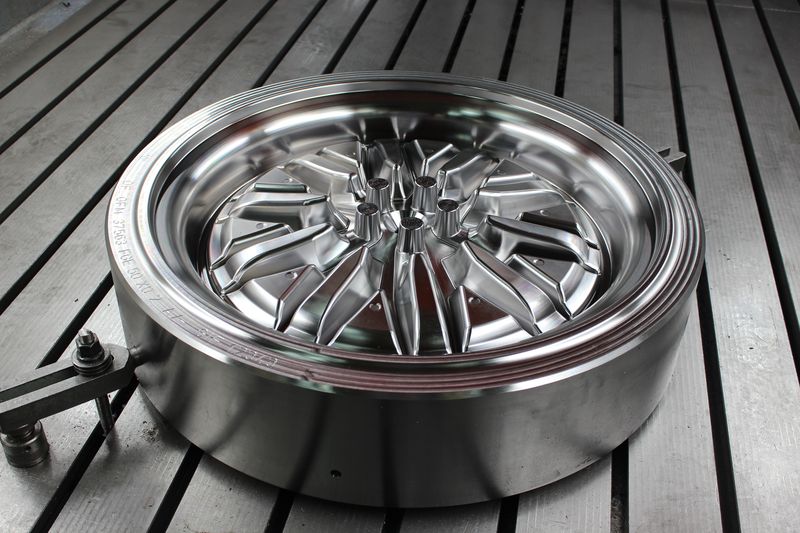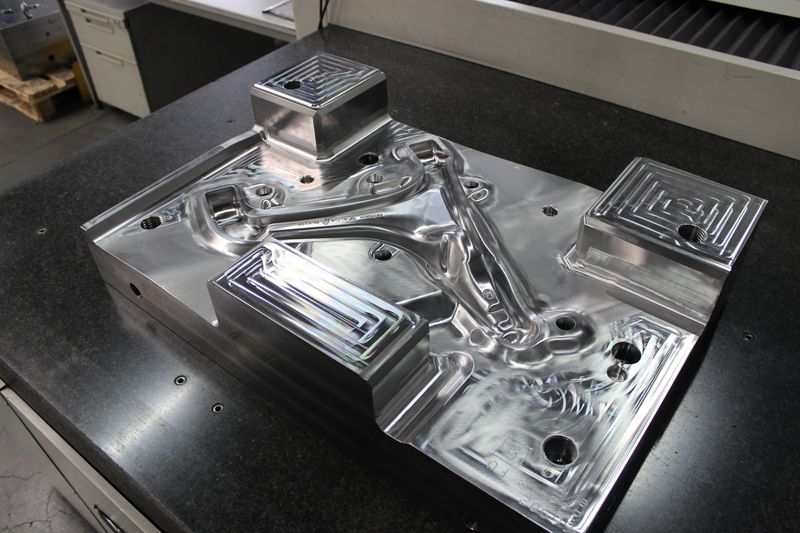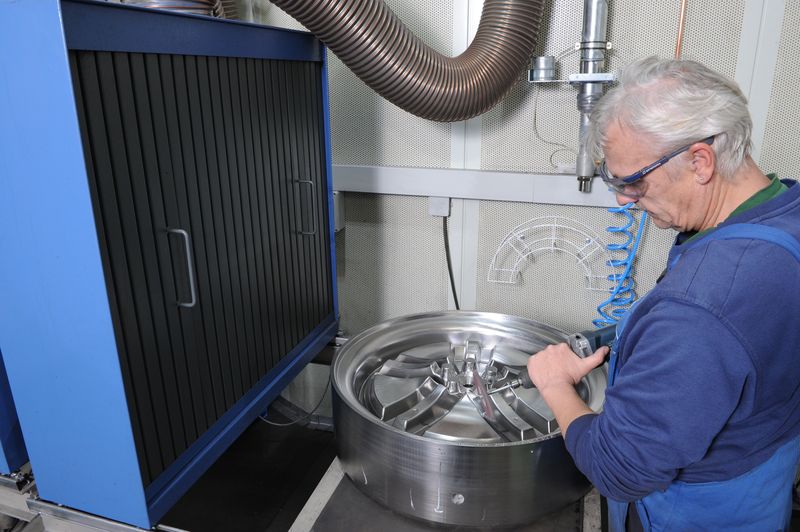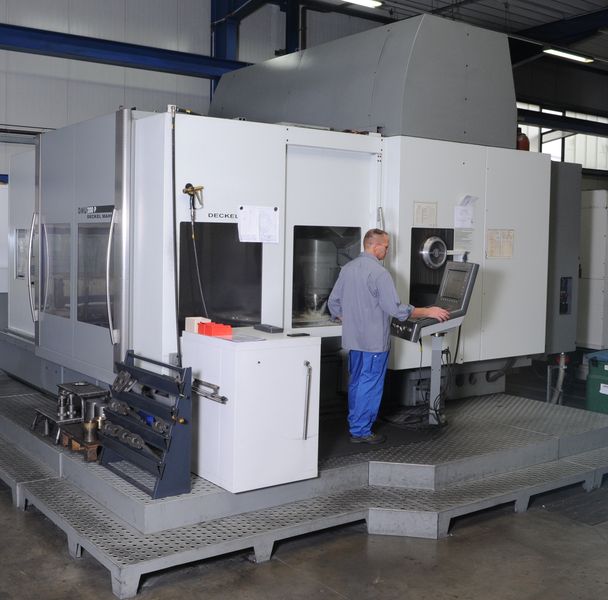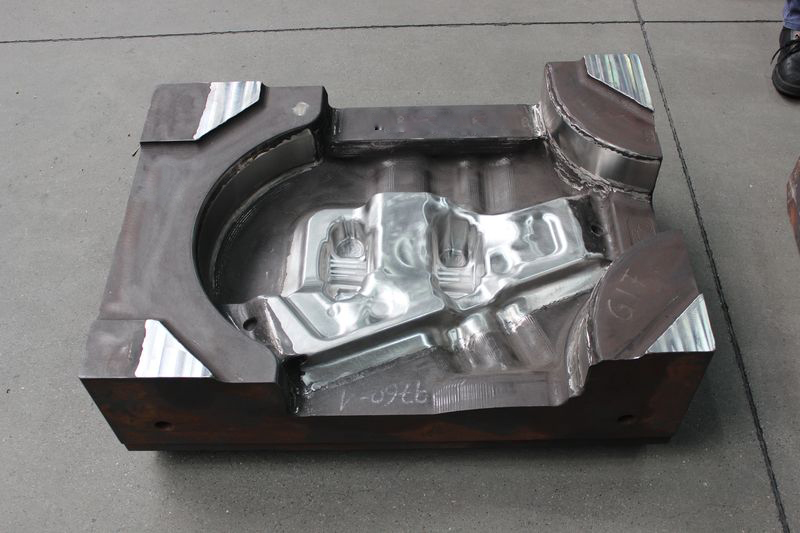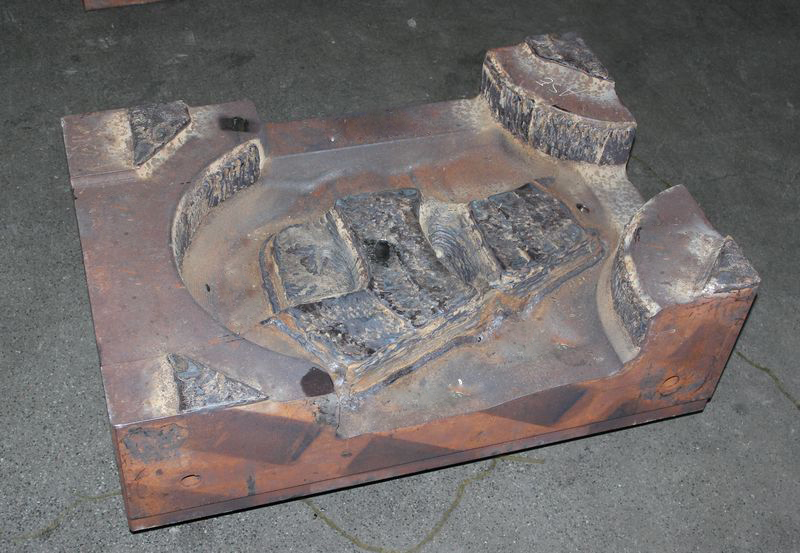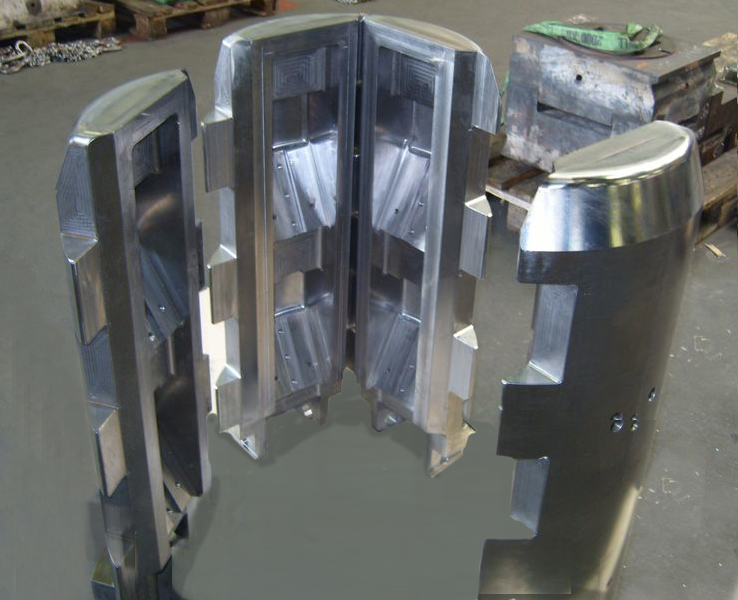- We have many years of experience in welding forging dies. 90 % of dies manufactured by GIF are executed in this technology – usually already at initial manufacturing.
- Depending on wear load, die cavities are completely or partially welded. The aim, especially for highly divergent local wear load, is to develop a wear load adapted material component system that is clearly superior to a homogeneous hot-working steel under these conditions.
- This technology is used not only in dies for steel forged parts, but also for aluminium forged parts. Weld cladding is essential for dies used in titanium forging – high temperature resistant welding alloys based on Co or Ni are applied in this case.
- Subsequent metal cutting of the welded tools requires know-how on cutting technology at the highest level, in which we have years of expertise and ongoing development.
Wear load adapted material component system – more than just repair welding:
- The mechanical and thermal load on the die during the forging process is extremely complex, varying greatly within the die cavity.
- Accordingly, requirements on the die materials are usually divergent – on the one hand, high temperature hardness and tempering resistance in the area of high flow velocity and contact times and on the other hand, high fracture toughness in subjacent grooves.
- A homogenous die steel – however high its quality – always represents a compromise with respect to the hardness and toughness grade to be set.
Our strategy:
- analysis of differing stress resulting from wear pattern, assessment of any fractures after gouging
- design of component system of materials (suitable welding alloys: basis Fe, Co, Ni)
- preparation of the welding plan
- quality compliant execution of welding, manufacturing of die cavity
- if requested: tool life tracking and optimisation together with customer


